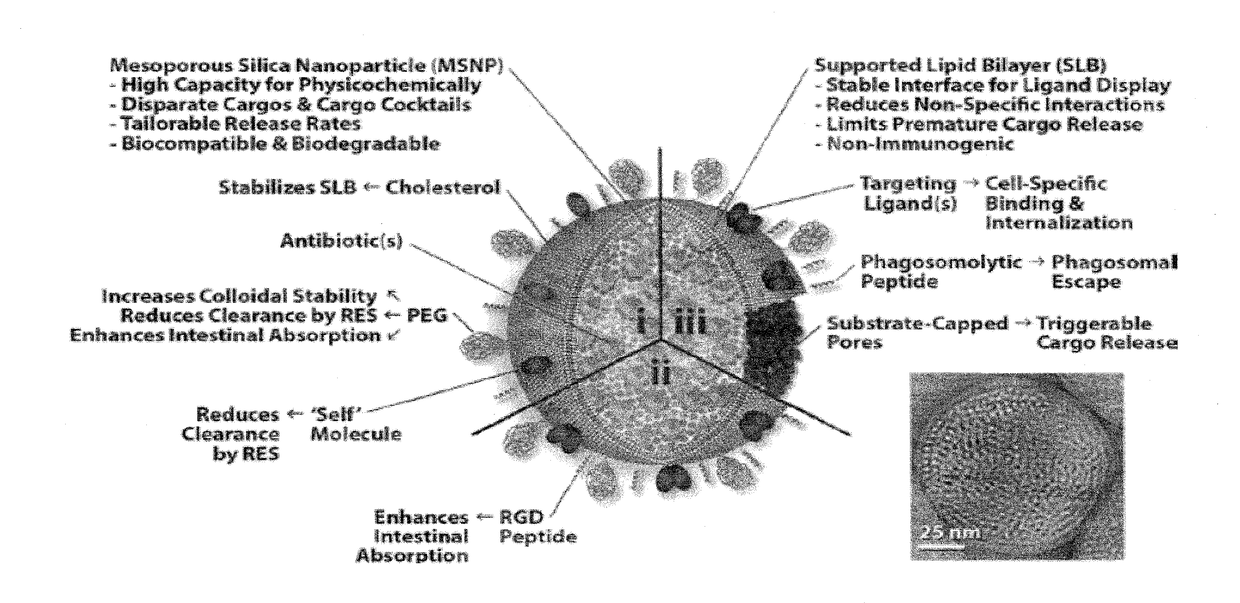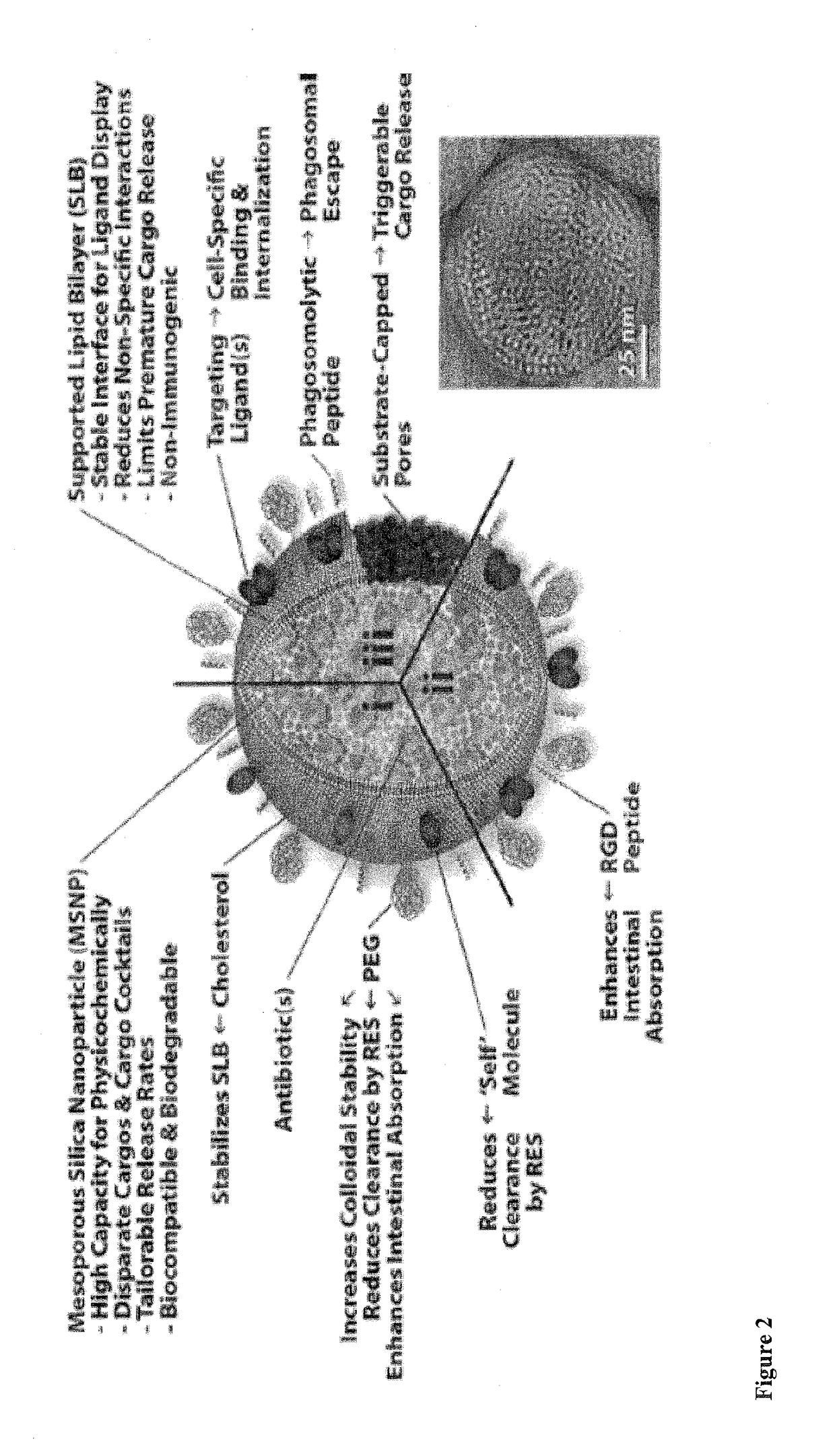Antibiotic protocells and related pharmaceutical formulations and methods of treatment
- Summary
- Abstract
- Description
- Claims
- Application Information
AI Technical Summary
Benefits of technology
Problems solved by technology
Method used
Image
Examples
example 1
Protocell Design and Optimization
[0165]Supplementary Table 1 lists the MSNP and supported lipid bilayer (SLB) properties we can precisely control and how these properties can be used to tailor the in vitro and in vivo functionality of protocells. In the next three sections, we describe how we have applied these design rules to adapt protocells for high capacity loading and controlled release of various FDA-approved antibiotics.
SUPPLEMENTARY TABLE 1Established fundamental design rules for the protocell platform. The MSNP and SLB properties that canbe precisely controlled to tailor various protocell parameters are listed, along with the resulting biologicaleffect(s) See Ashley, Carnes, Brinker, et al. Nature Materials (2011) for further details.MSNP or SLB PropertyProtocell Parameter(s)Biological Effect(s)Size and Size DistributionBiodistribution, internalization efficiencyTailor the concentration of drug(s) in specificorgans, tissues and / or cellsMSNP ChargeMSNP-SLB interactionBalance...
example 2
Orally-Administered Antibiotic Protocells for the Treatment of Respiratory Tularemia
[0180]Here we describe the disease progression of respiratory tularemia, which has guided our design of the three protocell formulations depicted in FIG. 2, and provide a thorough justification for our choice of oral administration over inhalation-based delivery modalities. We then provide tables that either describe features of the three protocell formulations or supply a detailed list of candidate enzymes and their cognate substrates, which we will use to develop infection-triggered release strategies. We also provide a series of schematics that are intended to illustrate how we expect orally-administered protocells to distribute as a function of time after intestinal penetration, how we expected Fcγ-targeted protocells with substrate-capped MSNP pores to interact with and selectively release encapsulated drug(s) within Ft-infected cells, and how we will construct MSNPs with substrate-capped pores,...
PUM
| Property | Measurement | Unit |
|---|---|---|
| Fraction | aaaaa | aaaaa |
| Fraction | aaaaa | aaaaa |
| Fraction | aaaaa | aaaaa |
Abstract
Description
Claims
Application Information
 Login to View More
Login to View More - R&D
- Intellectual Property
- Life Sciences
- Materials
- Tech Scout
- Unparalleled Data Quality
- Higher Quality Content
- 60% Fewer Hallucinations
Browse by: Latest US Patents, China's latest patents, Technical Efficacy Thesaurus, Application Domain, Technology Topic, Popular Technical Reports.
© 2025 PatSnap. All rights reserved.Legal|Privacy policy|Modern Slavery Act Transparency Statement|Sitemap|About US| Contact US: help@patsnap.com



